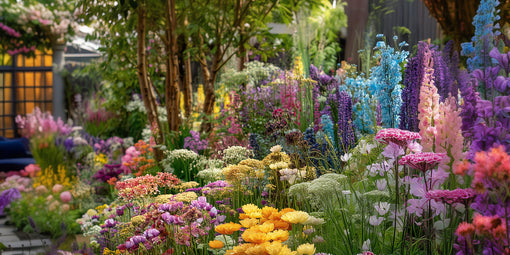
- Article published at:
Drawer menu

As an early Christmas present, this year we are offering all our readers 20% off our Christmas flowers! Find the offer code at the bottom of this post..
The season we all have been waiting for is finally here, and it’s time to get your baubles and reindeers out. Christmas is the one time of the year where we can transform our homes to a magical fairy-tale and we say let’s go and make this year the most spectacular one yet!
Celebrities are putting up their extravagant Christmas decorations with glitz and glamour and we are listing them all for you to dive in and get inspired.
From not so traditional decorations to very traditional Christmas decorations. Ferne McCann’s entrance is heavenly red and green with holly berries mixed in with baubles, just stunning.
She has chosen an untraditional white frosted Christmas tree with white and brown/bronze baubles.


Amanda Holden is no stranger to glamour and her untraditional Christmas tree decorations are definitely something to obsess about.
The Christmas tree is decorated with gold and blue baubles and wrapped in blue fabric and feathers at the top instead of a star.
For the door entrance she has truly gone all out with traditional red and gold baubles and greenery. Festive nutcracker statues stands next to the front door to greet her guests.



Holly Willoughby loves the white frosted look and we agree, it sure looks fabulous!
She has opted for silver and white baubles in various sizes mixed with fresh white frosted pine that will make your entrance smell like a crisp winter forest. Just amazing.


The Fletchers has gone for the fairy-tail theme with two life size nutcrackers, similar to Amanda Holdens decorations.
Their entrance is decorated with bauble-filled Christmas trees, and huge Christmas wreath hangs over the door. We especially love how the entire front door beautifully framed in multi-coloured baubles.


Kelly Brook style is traditional and somewhat Scandinavian where less is more.
She has opted for a real tree, which we love, and decorating it in a true Scandi style with white and silver decorations and fairy light. And a white star at the top.
A garland around the fireplace with natural decorations such as hydrangeas, berries and fun, cute mushrooms that makes it looks like a piece of the forest in her home. Truly lovely!


Abbey Clancys Christmas decorations are definitely one of our top 3 of all times. Extravagant yet traditional.
She is mixing baubles and red poinsettias which we are obsessed with. The brilliance in incorporating florals with Christmas decorations gives a fresh and natural vibes that's not over the top.
The red flowers makes the whole installation look warmer than when only choosing baubles, for example. Go, Abbey!

Stacey Solomon loves making her own Christmas decorations and also prefers the Scandi look with white and neutral tones.
This is her her homemade Christmas wreath that she hangs on her stone wall inside her home. Decorated with white berries, green leaves and a beautiful cream satin ribbon.
Stacey keeps the theme going and decorates her front door entrance in the same white, natural (ish) look. With white and brown twigs, reindeers and white and silver baubles.
She has finished it all off with fresh pine and mini fresh Christmas trees. One of our favourite looks by far.


Homemaking is something that Reese Witherspoon is no stranger to, and she always makes her home feel homey and inviting for all holidays of the year.
For Christmas she likes to decorate her home entrance with traditional bright red poinsettias that creates a natural and feminine look.
The poinsettias seems to be a popular choice and a great choice when you want to include fresh flowers in your Christmas decorations.

Whether your style is over-the-top glamorous, traditional or Scandi-chic, go with what makes you feel the most festive and what brings out the Mrs Santa in you.
As an early Christmas gift from us to you, we are offering all our readers 20% off our coveted Christmas Flower Box, The Lucia. Use code XMAS22 at checkout before the 25th of December 2022.